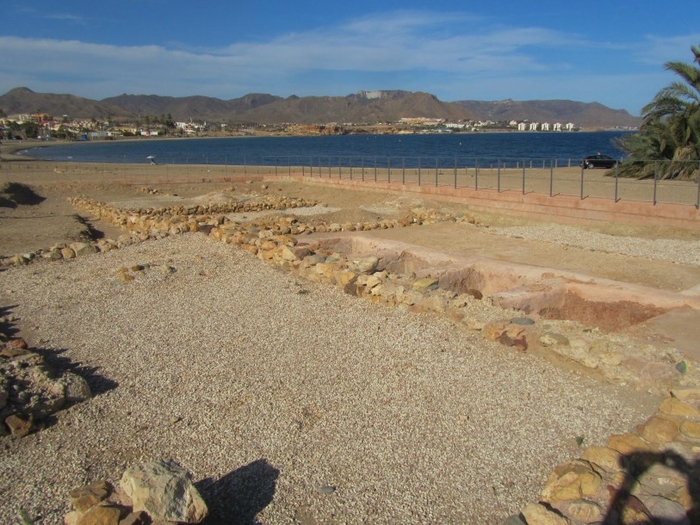- Region
- Águilas
- Alhama de Murcia
- Jumilla
- Lorca
- Los Alcázares
- Mazarrón
- San Javier
-
ALL AREAS & TOWNS
- AREAS
- SOUTH WEST
- MAR MENOR
- MURCIA CITY & CENTRAL
- NORTH & NORTH WEST
- TOWNS
- Abanilla
- Abarán
- Aguilas
- Alamillo
- Alcantarilla
- Aledo
- Alhama de Murcia
- Archena
- Balsicas
- Blanca
- Bolnuevo
- Bullas
- Cañadas del Romero
- Cabo de Palos
- Calasparra
- Camping Bolnuevo
- Campo De Ricote
- Camposol
- Canada De La Lena
- Caravaca de la Cruz
- Cartagena
- Cehegin
- Ceuti
- Cieza
- Condado de Alhama
- Corvera
- Costa Cálida
- Cuevas De Almanzora
- Cuevas de Reyllo
- El Carmoli
- El Mojon
- El Molino (Puerto Lumbreras)
- El Pareton / Cantareros
- El Raso
- El Valle Golf Resort
- Fortuna
- Fuente Alamo
- Hacienda del Alamo Golf Resort
- Hacienda Riquelme Golf Resort
- Isla Plana
- Islas Menores & Mar de Cristal
- Jumilla
- La Azohia
- La Charca
- La Manga Club
- La Manga del Mar Menor
- La Pinilla
- La Puebla
- La Torre
- La Torre Golf Resort
- La Unión
- Las Palas
- Las Ramblas
- Las Ramblas Golf
- Las Torres de Cotillas
- Leiva
- Librilla
- Lo Pagan
- Lo Santiago
- Lorca
- Lorquí
- Los Alcázares
- Los Balcones
- Los Belones
- Los Canovas
- Los Nietos
- Los Perez (Tallante)
- Los Urrutias
- Los Ventorrillos
- Mar De Cristal
- Mar Menor
- Mar Menor Golf Resort
- Mazarrón
- Mazarrón Country Club
- Molina de Segura
- Moratalla
- Mula
- Murcia City
- Murcia Property
- Pareton
- Peraleja Golf Resort
- Perin
- Pilar de la Horadada
- Pinar de Campoverde
- Pinoso
- Playa Honda
- Playa Honda / Playa Paraíso
- Pliego
- Portmán
- Pozo Estrecho
- Puerto de Mazarrón
- Puerto Lumbreras
- Puntas De Calnegre
- Region of Murcia
- Ricote
- Roda
- Roldan
- Roldan and Lo Ferro
- San Javier
- San Pedro del Pinatar
- Santiago de la Ribera
- Sierra Espuña
- Sucina
- Tallante
- Terrazas de la Torre Golf Resort
- Torre Pacheco
- Totana
- What's On Weekly Bulletin
- Yecla


- EDITIONS:
 Spanish News Today
Spanish News Today
 Alicante Today
Alicante Today
 Andalucia Today
Andalucia Today
Sporting beaches: Jet-ski hire, beach fishing and windsurfing, Playa Alamillo Mazarrón
Blue flag semi-urban beach, popular with windsurfers and fishermen
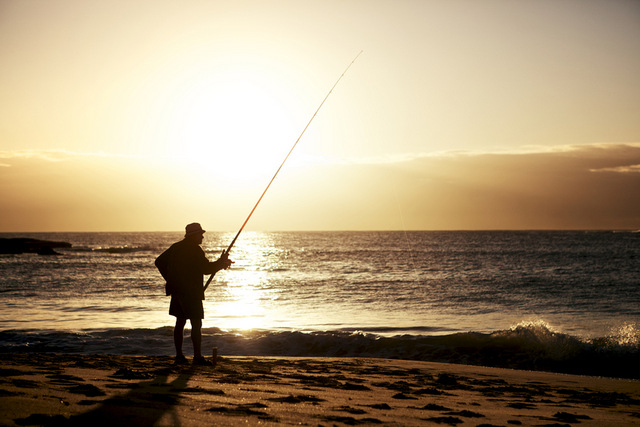
600 metres long with sand and shingle
This is a semi-urban Mediterranean beach, and is the fourth beach in a line of 31 Mediterranean beaches which stretch along the Mazarrón coastline between the borders of the Cartagena municipality and that of Lorca.
This beach is 600 metres long, with an average width of 14 metres, narrower and stonier at the Isla Plana and Playa Negra end, opening up into a much wider and sandier curve as it heads towards the port area of the Puerto de Mazarrón.
At the port end of the beach, the footings of a Roman villa and tanks used in the production of the pungent fish sauce which was widely used in Roman cooking, garum, can be seen. ( see below for more information.)
The beach runs along the side of the N-332 which links the Puerto de Mazarrón with Cartagena, and there is plenty of parking, both alongside the beach and on the opposite side of the carriageway at the foot of the El Alamillo urbanisation.
Right at the port end of the beach near to the remains of the Roman villa is one of three dog beaches within the municipality, and there is plenty of parking offroad close to both of these locations.
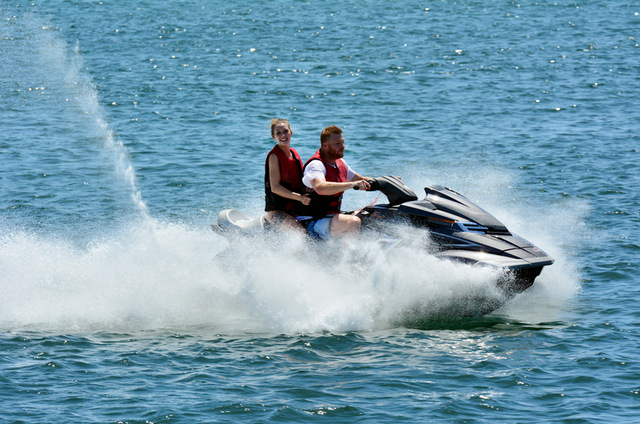
Services and facilities
This is a blue flag beach, which means that it has been awarded a blue flag in recognition of the quality of its waters, cleanliness of its beach, level of services and information provided, as well as level of environmental protection by the FEE, Foundation of environmental education, which works in 64 countries.
During the summer months the beach has portable toilets which are suitable for use by those with wheelchairs, waste and recycling bins, footwashes, children’s playa area, lifeguard and basic medical cover and wooden walkways down onto the beach.
The larger areas of sand are groomed by the council and the posidonia deposits which build up during the winter are cleared from the beach during the tourist season. There are substantial meadows (praderas) of this valuable and important ocean grass just offshore, preventing erosion and creating a healthy marine environment.
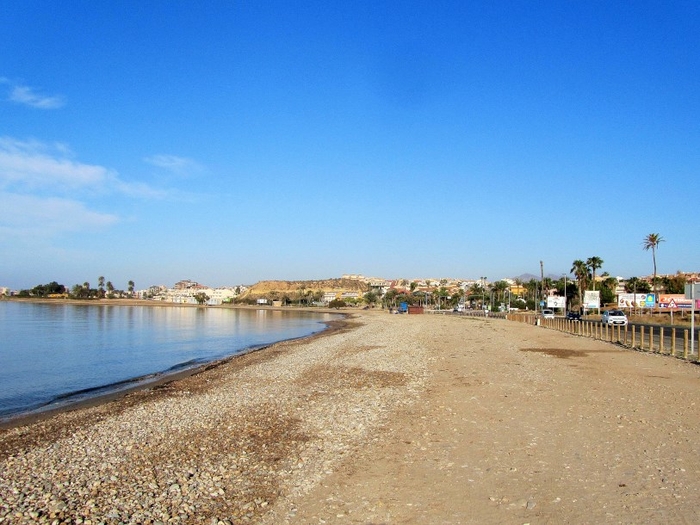
The beach has a chiringuito, or large beach bar during the summer, which offers regular entertainment and also provides shelter from the sun. There are restaurants just a few metres from the beach which service the El Alamillo urbanisation, as well as a pharmacy and the beach is less than half a kilometre from the start of the main paseo marítimo and urban beaches of the Port of Mazarrón which are very well serviced by the shops and restaurants of the town centre.
There is a bus-stop nearby which is on the urban Mazarrón-Murcia route. For the latest timetable and further information about the Mazarrón municipality go to the dedicated Mazarrón municipality section.(see Tourist info for bus timetables)
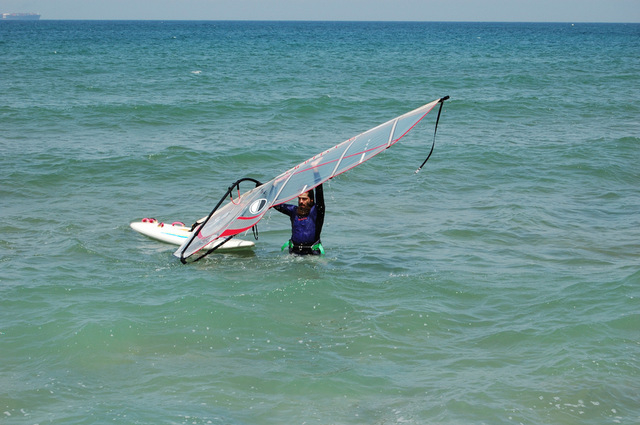
Occupation
Even during the busy summer months occupation levels are only ever low to medium.
Sporting facilities
This beach is particularly prone to wind and the proximity of the road-side parking to the sand makes it attractive to windsurfers.
There are no thermal winds, so sailing conditions depend very much on wind strength and direction, and El Alamillo beach is considered to be very much an “improvers” beach. The calm, flat, non-tidal waters of the Mar Menor are ideal for beginners, but once a sailor starts to demand greater challenges, then tidal beaches with good launching conditions must be sought on the Mediterranean coast.
Windsurfers tend to stay close to the Playa Negra where launching conditions are best, but it must be emphasised that this beach should only be sailed with an onshore wind, not a side-wind, as even experienced sailors will admit to being blown down the coast to Isla Plana and being unable to get back due to a combination of currents, wind direction and wave configuration due to the rocky outcrops along this coast.
There is only lifeguard cover during the summer months, so great care should be exercised out of peak season.
For this reason care should be exercised when swimming offshore on windy days and if there are windsurfers on the beach it’s advisable to swim well away from the windsurfers; inexperienced sailors can be dangerous as it is extremely difficult for a sailor on a windsurfing board to spot a swimmer snorkelling just below the surface in choppy water. There have been instances of swimmers being very seriously injured or even killed by windsurfing boards, which have a long, sharp-edged skeg beneath designed to slice through the water and if a board runs over a swimmer, can easily slice into a bather as well, particularly if travelling at speed.
There is also a launching lane for jetskis and small boats in the summer months, with a jetski hire company operating on the beach.
This beach is also very popular with fishermen. Mazarrón is unusual in that it permits fishing from its beaches right throughout the year. Click to read full information about fishing in the Mazarrón municipality.
The Roman Villa at El Alamillo
Modern-day Cartagena was taken by the Romans from the Carthaginians in 209 BC and they swiftly set about exploiting the natural resources of the area, establishing a settlement in what is now Mazarrón, which they named "Ficaria".
Roman interest in the Mazarrón area stemmed from its proximity to Cartagena, which the Romans named Cartago Nova, a substantial colony and Roman Trading Port.
In the 1970s a Roman milestone was found near the Convent of "La Purísima", ( Click Milario Mazarrón) which showed the distance in miles from the Via Augusta (one of the main communications and trade routes created by the Romans, running from Cádiz to the Pyrenees, following the Mediterranean coastline). Mazarrón was one of the ports of call along the route, which was built in parts over an old Iberian road.
Mazarrón has significant mineral resources and the Romans exploited the mines during their period of occupation. A large number of objects and even homes of Roman origin have been found testifying to their presence. Romanization in the area was rapid and largely complete.
But apart from their mining activity, the Romans were also especially attracted by the opportunity to produce "garum". This was a highly prized (and highly priced!) salted fish sauce, and was exported from the Mediterranean throughout the Roman Empire. ( Click for more info, garum production in Murcia.) Mazarrón holds a very well preserved Roman salting factory, which is located close to the main fishing port area and is well worth a visit for those who are interested in historical locations. ( Click Museo de Salazones, Mazarrón)
Garum production took place right along the coastline, allied to local fishing activity and there are several smaller sites where the tanks used to macerate small fish and ferment them to produce the sauce, can be seen, one of which is the Roman villa site at El Alamillo, at the far end of the Alamillo beach.
This villa was constructed during the second half of the 1st Century BC and in its day would have been a self- sufficient farmstead.
It is a typical Roman villa of the 1st Century BC, with external workshops and would have farmed the surrounding areas, as well as being actively involved in fishing activities and garum production. There is also evidence of further Roman construction at the opposite end of the Alamillo beach although it is impossible to tell whether the two structures were linked in any way.
On the site it can clearly be seen that this particular villa was involved in the production of garum, fish sauces, and salted fish products at the same time as the large salt fish factory further along the coast in what is now the fishing port area.
For more info about this highly prized Roman fish sauce, click Making Garum in Murcia
There are six original salt fish tanks in which the the fish would have been macerated to produce garum fish sauce and although there are other salt fish tanks along the coastline, none are as complete as these.
The villa would probably have been abandoned by the end of the 2nd century or early in the 3rd century AD and comprises several rooms around a central courtyard.
There is very little to see other than the walled structure and tanks, but it is interesting to see this remnant of Roman occupation and then continue on into the port to see the main museum which is located inside the original structure of the larger-scale salt fish production factory. Click for more information: Roman Salt Fish Factory Mazarrón
Click for more information relating to the Mazarrón municipality
Other Mazarrón Beaches

